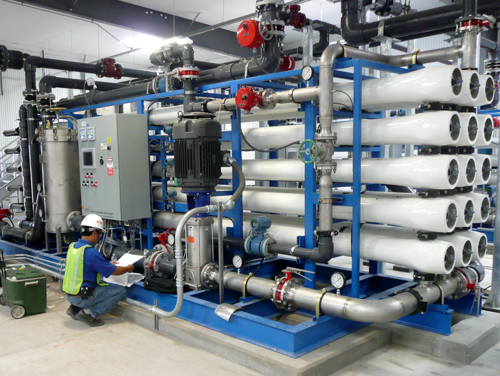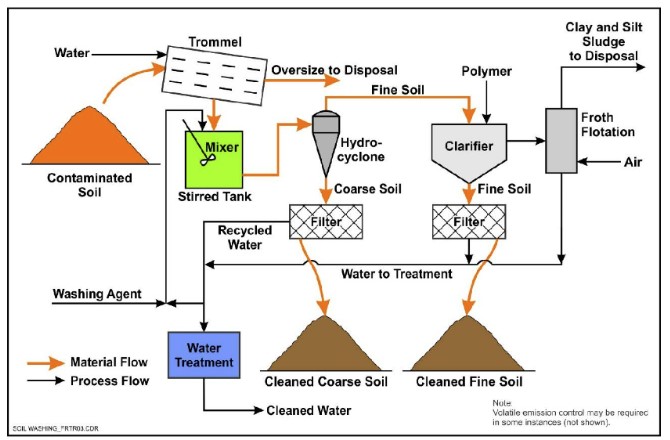Your Overview to PFAS Treatment Technologies and Advantages
The frequency of PFAS contamination in water resources requires a comprehensive understanding of offered treatment modern technologies. Various techniques, such as triggered carbon filtration, ion exchange systems, and advanced oxidation processes, present distinct advantages in attending to these persistent contaminants. Each innovation not just targets particular PFAS compounds yet additionally plays an important role in enhancing total water high quality and shielding ecological integrity. As neighborhoods come to grips with the ramifications of PFAS exposure, the choice of a proper treatment strategy ends up being progressively essential, motivating a better evaluation of these technologies and their particular advantages.
Recognizing PFAS Contamination
Comprehending PFAS contamination is important for resolving its pervasive influence on ecological and human health (m270 pfas treatment). Per- and polyfluoroalkyl materials (PFAS) are a team of artificial chemicals commonly utilized in different commercial and consumer items because of their water- and grease-resistant residential properties. Commonly discovered in firefighting foams, non-stick cooking equipment, and water-repellent textiles, PFAS have actually gotten in the setting via manufacturing processes, wastewater discharges, and leaching from landfills
Once released, these substances persist in the environment, leading to widespread contamination of dirt and water resources. Their one-of-a-kind chemical framework, identified by solid carbon-fluorine bonds, makes them resistant to degradation, resulting in a phenomenon referred to as "forever chemicals." As a result, PFAS can build up in the human body and the food chain, possibly triggering unfavorable health effects, including body immune system disturbance, developing concerns, and an enhanced threat of certain cancers.
Regulatory agencies and wellness organizations are progressively acknowledging the importance of PFAS contamination, motivating initiatives to keep an eye on, evaluate, and reduce its impacts. Recognizing the pathways of PFAS contamination is essential for notifying public law and establishing effective strategies to secure both ecological and human health and wellness.
Summary of Therapy Technologies
Various therapy modern technologies have been established to resolve the difficulties postured by PFAS contamination in water and soil. These modern technologies can be extensively identified into a number of groups, each with its unique systems and performance in eliminating PFAS substances.
One popular approach is ion exchange, which uses resin products to capture and remove PFAS from infected water. An additional modern technology, progressed oxidation procedures (AOPs), utilizes solid oxidants and ultraviolet light to break down PFAS into less dangerous materials.

Turned On Carbon Purification
Turned on carbon filtration is a widely utilized method for the elimination of PFAS from contaminated water, understood for its capacity to adsorb a wide variety of organic substances. This technology employs activated carbon, a highly porous material with a comprehensive area, which promotes the binding of PFAS particles via physical adsorption. The effectiveness of turned on carbon in removing PFAS is affected by several elements, including the kind of view publisher site carbon used, the contact time, and the concentration of PFAS in the water.
Among the benefits of turned on carbon purification is its versatility; it can be carried out in different arrangements, such as granular turned on carbon (GAC) systems or powdered turned on carbon (POLITICAL ACTION COMMITTEE) systems. GAC systems are typically employed in larger-scale linked here applications, while special-interest group can be made use of in smaller or short-term setups. The modern technology is fairly easy to operate and maintain, making it accessible for lots of water treatment centers.

Ion Exchange Systems
Ion exchange systems stand for another effective approach for the elimination of PFAS from contaminated water, enhancing methods like activated carbon filtration. These systems operate the principle of trading ions in the water with ions held on a resin product. Ion exchange resins can be specifically developed to target the negatively billed PFAS compounds, properly recording them and enabling cleaner water to go through.
One of the key benefits of ion exchange systems is their ability to eliminate a vast array of PFAS, including both long-chain and short-chain variants. This adaptability makes them suitable for various applications, ranging from municipal water therapy to industrial procedures. Additionally, ion exchange systems can frequently attain lower detection restrictions for PFAS compared to some other therapy methods, hence enhancing water high quality.
Nonetheless, it is important to check and manage the regeneration of ion exchange media, as the performance can decline gradually as a result of saturation. Proper maintenance and replacement of the material are crucial for sustaining the system's effectiveness. Generally, ion exchange systems offer a reliable and efficient service for PFAS elimination, adding dramatically to risk-free alcohol consumption water criteria and environmental protection.
Advanced Oxidation Processes
Advanced Oxidation Processes check over here (AOPs) use effective oxidants to effectively weaken PFAS compounds in contaminated water. These innovative treatment techniques produce extremely responsive types, such as hydroxyl radicals, that can damage down intricate PFAS particles right into much less hazardous by-products. m270 pfas treatment. AOPs commonly employ combinations of ultraviolet (UV) light, ozone, hydrogen peroxide, or Fenton's reagent, enhancing the oxidation potential and improving degradation efficiency
The main advantage of AOPs hinges on their capacity to target a broad variety of PFAS substances, consisting of both long-chain and short-chain versions. This convenience is essential, as PFAS contamination typically includes mixes of different substances with differing chemical structures. AOPs can be integrated right into existing water therapy systems, making them a sensible option for numerous municipalities and sectors.
Nevertheless, the application of AOPs can be resource-intensive, needing cautious consideration of operational prices and energy intake. Furthermore, while AOPs work in damaging down PFAS, they might not entirely get rid of all results, demanding further therapy steps - m270 pfas treatment. Generally, AOPs stand for an encouraging method for dealing with PFAS contamination, contributing to cleaner water resources and improved public health defense

Conclusion
Finally, addressing PFAS contamination calls for a comprehensive understanding of available therapy innovations. Triggered carbon filtration, ion exchange systems, and progressed oxidation procedures each present special advantages for efficiently removing these harmful substances from water sources. By selecting the appropriate innovation, areas can boost water high quality, safeguard public health, and mitigate the ecological dangers associated with PFAS exposure. Proceeded study and execution of these techniques are vital for effective monitoring of PFAS contamination in affected locations.